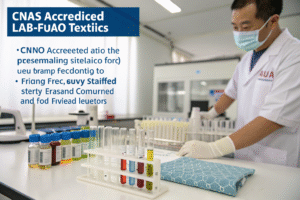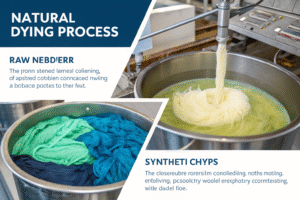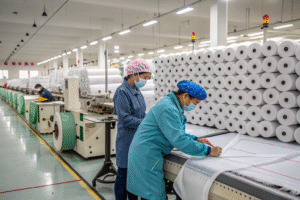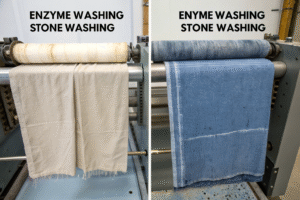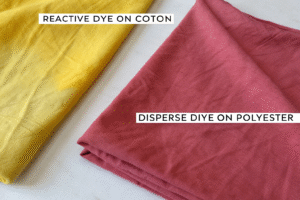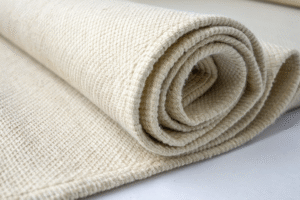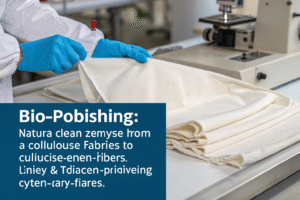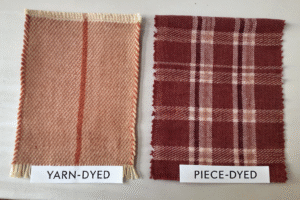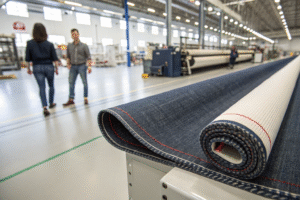Minimum Order Quantity (MOQ) is one of the most important but often misunderstood elements in fabric sourcing. Whether you're launching a new fashion line or customizing materials for accessories or home textiles, the MOQ significantly affects your costs, flexibility, and supply chain. This guide explores the definition, influencing factors, common fabric types, typical MOQ ranges, and pricing models across domestic and international suppliers.
I. What Is Fabric MOQ?
MOQ stands for Minimum Order Quantity. It refers to the smallest volume of fabric a manufacturer or supplier is willing to sell in a single order. MOQs are typically expressed in:
Meters or yards (for woven/knitted fabrics)
Kilograms (for knit or bulk dyed fabrics)
Rolls (for wholesale distributors)
High MOQs can create barriers for small brands or designers seeking limited runs, while lower MOQs offer flexibility but may come with higher per-unit costs.
II. Why MOQs Exist in Fabric Sourcing
MOQs exist due to the operational and financial realities of textile production:
Dyeing machine capacity: Dye houses often need 300–1000 meters to fill a single batch.
Weaving and knitting setup: Loom changeover and yarn preparation are labor-intensive.
Raw material bulk: Suppliers buy yarn and dyes in bulk; small orders disrupt their volume.
Logistics: Export documentation, freight, and packaging favor bulk shipments.
Inventory control: Small orders require warehousing or leftover risk.
III. Common MOQ Tiers by Fabric Type
Fabric Type
Typical MOQ
Price per Meter (USD)
Notes
Cotton (solid dyed)
300 – 500 meters
$2.5 – $4.0
Reactive dye, bulk dye minimums
Cotton (digital print)
50 – 100 meters
$5.0 – $10.0
Short runs possible, higher cost
Linen
200 – 300 meters
$6.0 – $15.0
MOQ lower if greige only
Polyester
500 – 1000 meters
$1.5 – $3.0
Economical, favored for fast fashion
Recycled Polyester
300 – 500 meters
$2.5 – $5.0
GRS certified versions available
Rayon / Viscose
400 – 800 meters
$3.5 – $7.0
Needs precise dye bath control
Tencel / Lyocell
200 – 300 meters
$5.0 – $9.0
Eco-friendly, rising demand
Silk (plain dyed)
100 – 200 meters
$10.0 – $25.0
MOQ varies by weave type
Silk (digital print)
20 – 100 meters
$12.0 – $35.0
Ideal for scarves, high flexibility
Wool (suiting)
50 – 100 meters
$15.0 – $45.0
Often sold as cuts or per pattern
Denim (12–14 oz)
500 – 1000 meters
$2.8 – $6.0
Indigo dye minimums apply
Stretch Knits (cotton)
300 – 500 kg
$3.5 – $5.5
MOQ by weight, not meter
Mesh / Sports Fabrics
400 – 800 meters
$3.0 – $6.0
Often tied to brand tech specs
IV. MOQ Comparison by Manufacturing Region
Region
Typical MOQ Range
Cost per Meter
Notes
China
300 – 1000 meters
Low – Moderate
Most flexible for digital prints
India
500 – 2000 meters
Low
Strong in cotton and woven jacquards
Turkey
300 – 600 meters
Moderate
Fast lead times into Europe
Italy
100 – 300 meters
High
Ideal for luxury fabrics and small batches
Korea
200 – 500 meters
Moderate – High
High-tech knits, synthetics innovation
USA
100 – 500 meters
High
Focused on sustainability and niche bases
V. How to Lower Fabric MOQs
Use stock-supported programs: Many mills offer "running lines" with no MOQ.
Partner with converters: These agents buy bulk from mills and sell smaller cuts.
Use digital printing: Requires less base fabric and dye.
Opt for greige goods: Undyed fabric has less processing requirement.
Negotiate across seasons: Combine sampling and production into one MOQ.
Batch purchase with peers: Shared buying with other designers.
VI. MOQ and Pricing Relationship
As a rule, the higher your order volume, the lower the unit price. Price breaks typically occur at:
100 meters
300 meters
500 meters
1000 meters
Example – Polyester Knit:
100m: $3.80/m
300m: $3.30/m
500m: $2.90/m
1000m: $2.50/m
Fabric mills often include upcharges for custom dyeing, print screens, or finishing below their MOQ threshold (e.g. $200 surcharge for orders under 200m).
VII. MOQ and Sustainable Fabrics
Sustainable Fabric
MOQ Range
Price per Meter (USD)
Supplier Notes
Organic Cotton Jersey
300 – 500 m
$4.5 – $7.5
GOTS certified from India
Recycled PET Mesh
400 – 800 m
$4.0 – $6.5
Available in China/Korea
Hemp Cotton Blends
200 – 500 m
$5.5 – $9.0
MOQ varies by yarn availability
Tencel Modal Rib
300 kg
$5.0 – $8.0
Price/kg for knits
Smaller MOQ programs are increasingly offered by eco-minded mills and trade platforms like Common Objective, SwatchOn, and Saitex.
VIII. Practical Tips for MOQ Negotiation
Ask for MOQ by color vs. style: Some mills allow low MOQ per color if style is shared.
Confirm MOQ includes waste: Especially for printing, 5–10% overage may apply.
Request lab dips or strike-offs before committing to MOQ.
Consider seasonal MOQs: Mills may offer lower MOQ during off-peak production.
Always clarify lead time: Low MOQs may delay if piggybacked on larger jobs.
Conclusion
Fabric MOQ is a critical factor in product development, especially for small to medium-sized fashion businesses. Understanding how MOQ works—what drives it, how to work around it, and how it impacts your cost structure—is vital for scaling production efficiently.
By mastering the balance between MOQ, cost, and quality, sourcing teams can avoid overbuying while still accessing premium materials for competitive collections. With more suppliers offering low-MOQ solutions and digital production models, there has never been a better time to negotiate smartly and source sustainably.

